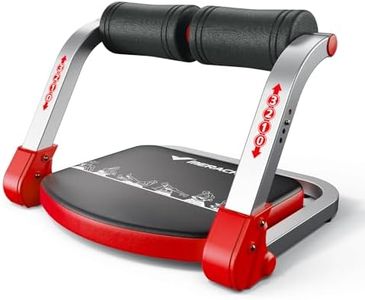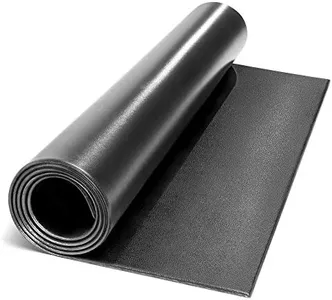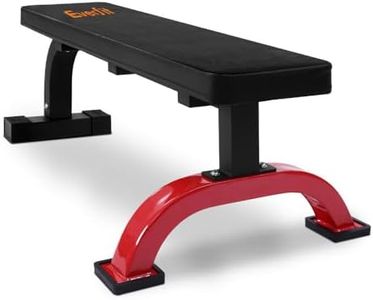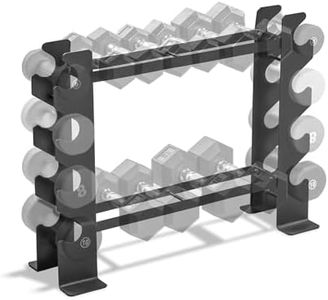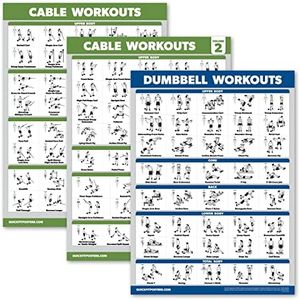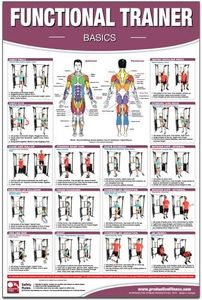We Use CookiesWe use cookies to enhance the security, performance,
functionality and for analytical and promotional activities. By continuing to browse this site you
are agreeing to our privacy policy
8 Best Smith Machines
From leading brands and best sellers available on the web.Buying Guide for the Best Smith Machines
Choosing the right smith machine for your home or gym setup can make a huge difference in your fitness journey. A smith machine is a type of weight-lifting equipment that guides a barbell on fixed rails, providing a safer and more controlled movement for exercises like squats, bench presses, and shoulder presses. When you're looking to pick the best one, focusing on how you plan to use the machine, the space you have available, and the features that matter to your training style will help ensure you make the right choice. Understanding the key specifications will guide you to a smith machine that fits your workouts and supports your fitness progress.Weight CapacityWeight capacity tells you how much weight the smith machine can safely handle. This is important because using more weight than the machine can support can be dangerous and could break the equipment. Weight capacities usually range from around 300 lbs for basic home versions to over 1000 lbs for heavy-duty commercial models. If you’re just starting out or planning light to moderate workouts, a lower capacity may be enough. However, if you plan to do heavy lifting or share the equipment with others who lift heavy, go for a higher weight capacity to ensure long-term durability and safety.
Size and FootprintThe size or footprint of a smith machine refers to how much floor space the equipment takes up. This matters because you need to make sure it fits in your dedicated space without crowding your home or gym. Smith machines come in compact versions that are suitable for small rooms, as well as larger, more robust setups that need a generous workout area. Before buying, measure your available space and compare it to the dimensions listed by the manufacturer. Pick a size that lets you move comfortably around the machine and leaves enough room for safe workouts.
Bar Path DesignBar path design describes the way the barbell travels on the machine. Most smith machines have vertical or slightly angled bar paths. Vertical bar paths keep movements strictly up and down, which is simple and safe for beginners. Angled bar paths, usually set at around 7 to 12 degrees, can offer a more natural movement for certain exercises, mimicking free-weight lifting. If you prefer a straightforward guided motion, choose a vertical path. If you want the feel of traditional barbell exercises with a bit more flexibility, a slanted path design might suit you better.
Safety Stops and LockoutsSafety stops and lockouts are the built-in features that allow you to catch or secure the bar at various heights. This is a key aspect for safety, especially if you're lifting alone, because it helps prevent the bar from falling if you fail a lift. Machines vary in the number and spacing of lockout points; more points mean you can stop the bar closer to any position. If you’re concerned about safety or plan to lift heavy weights without a spotter, look for a machine with frequent, easy-to-use lockout options to suit the range of exercises you’ll do.
Attachments and VersatilityAttachments refer to the extra pieces of equipment that can be added to the smith machine, such as pull-up bars, cable pulleys, or benches. This impacts how many different exercises you can do with the machine, making it more versatile. Basic models may not come with any extras, while more advanced machines can offer a complete home gym setup. Think about your workout routines and which features you’ll actually use. If you like to have a variety of workouts without buying separate machines, choose a model with multiple attachment options.
Build Quality and StabilityBuild quality covers the materials and construction of the smith machine. Stability is about how solidly the machine stands during use. These aspects matter because good build quality and stability ensure the machine is safe, lasts longer, and feels secure during heavy lifts. Machines made from thicker steel and with reinforced welds usually feel sturdier and are less likely to wobble. If you’re doing intense workouts or heavier lifts, prioritize a machine with a strong frame and solid construction to reduce risk and extend the equipment’s life.
